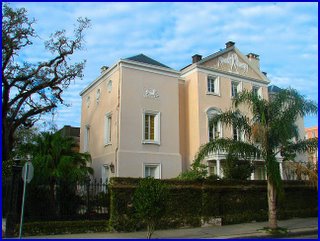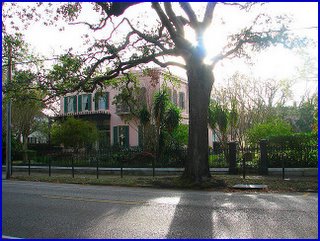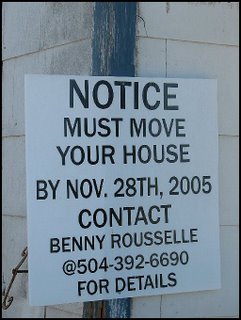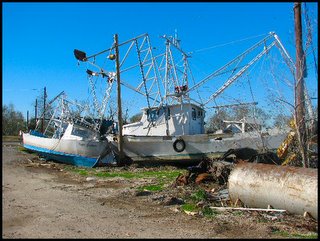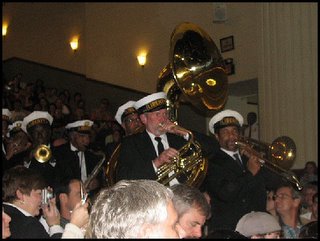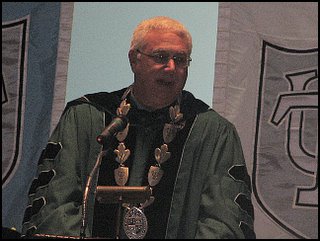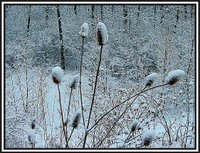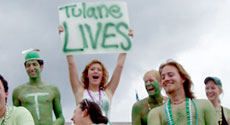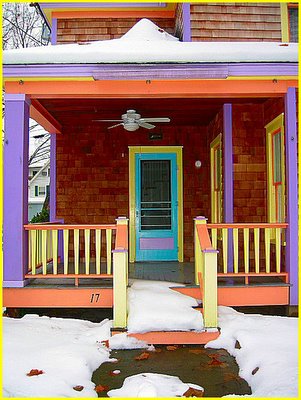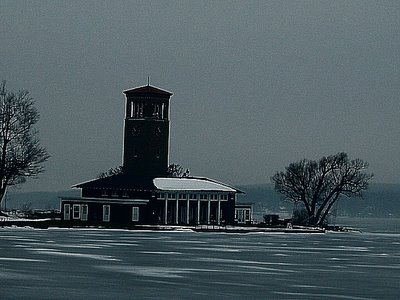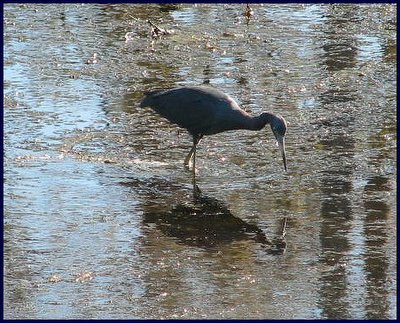

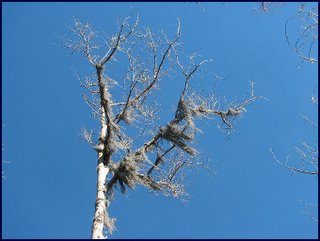
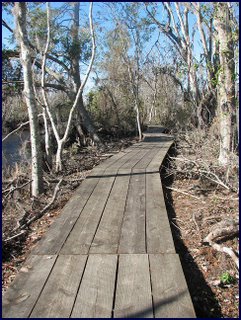

A little blue heron is a fragile bird. Even though it's about two feet high and its wingspan exceeds three feet, its leg and wing bones are so long and spindly that it seems spectrally susceptible to any gust of wind. That long curved heron neck doesn't appear to add anything in terms of solidity.
And yet there they were, survivors of Katrina, mucking about in the canal as if nothing had ever happened.
I spent part of an afternoon during my New Orleans trip at the Barataria Preserve of the Jean Lafitte National Historical Park and Preserve. Monsieur LaFitte was a pirate of some renown, remembered by name in the form of a tiny town and the various components of the Preserve that lie scattered across the Mississippi Delta. I don't know what kinds of natural blasts from water and wind he endured, but as a pirate he's as good a symbol as any for survival in the face of the merciless ravages of weather and politicians.
The park, as you can see, has suffered. The cypress knees huddled together remind me of a childhood book I loved, The Singing River, but the bare limbs from which the Spanish moss waves heroically signal hurricane destruction. It's the south, and the trees have no business looking like the ones at home this time of year.
I walked a mile or so along a path through the swamp, one of the few open to hikers even five months after the storm, and then another mile or so on the boardwalk that parallels an old canal. The yellow-rumped warblers that will find their way back here in May were much in evidence, along with chickadees whose call varies just slightly from that heard in the winter woods of the north. I'm guessing that that means they were Carolina chickadees instead of our own black-capped chickadees.
No alligators, and only the occasional human. I am so grateful for places like this Preserve, where I can be alone with my thoughts and the wide swath of world to which human delight and loss are alike irrelevant.
Down along the canal, a great egret hunted hungrily, and a muskrat so enormous that I at first thought she was a beaver feasted on waterlillies. The little blues were more elusive. In St. Augustine, there are places along the river where you can sit at sunset and watch them sailing in flocks to secret overnight haunts. If there are still flocks of them in southeastern Louisiana, they did not make themselves known to me. But there are solitary survivors, testamentary to the quiet will of nature even in the face of its own most devastating onslaught.










